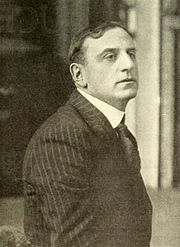Maurice Tourneur's Human Design Chart
1/3 Emotional GeneratorFrench film director and screenwriter.
As a young man, he first trained as a graphic designer and a magazine illustrator but was soon drawn to the theater. In 1904, he married the actress, Fernande Petit. They had a son, Jacques (1904–1977), who would follow his father into the film industry.
Using the stage name Maurice Tourneur, he began his show business career performing in secondary roles on stage and eventually toured England and South America as part of the theater company for the great star Gabrielle Réjane. Drawn to the new art of filmmaking, in 1911 he began working as an assistant director for the Éclair company. A quick learner and an innovator, within a short time he was directing films on his own using major French stars of the day such as Polaire.
In 1914, with the expansion of the giant French film companies into the United States market, Tourneur moved to New York City to direct silent films for Éclair’s American branch studio in Fort Lee, New Jersey before moving to William A. Brady’s World Film Corporation, where he directed important early American feature-length films.
As the feature film evolved in the mid 1910s, he and his team (comprising screenwriter Charles Maigne, art director Ben Carré, and cameramen John van den Broek and Lucien Andriot) coupled exceptional technological skill with unique pictorial and architectural sensibilities in their productions, giving their films a visual distinctiveness that met with critical acclaim.
After directing several innovative films for Adolph Zukor’s Artcraft Pictures Corporation (which released through Paramount) in 1917 and 1918, Tourneur launched his own production company with the film Sporting Life. In 1921 he became a naturalized citizen of the United States. By 1922 he believed that the future of the film industry lay in Hollywood and the following year he was hired by Samuel Goldwyn to go to the West Coast and make a film version of the Hall Caine novel The Christian. However, Tourneur’s career in the United States faltered in the 1920s as his pictorialism sometimes hampered the narrative drive of his later films, and he also separated from his wife Fernande in 1923. He was removed from production on Metro-Goldwyn-Mayer’s version of Jules Verne’s The Mysterious Island in 1928, and this marked the end of his American career.
After his trouble with MGM, Tourneur decided to move back to his native France. There, he continued to make films both at home and in Germany, easily making the change to talkies. In 1933 he met his second wife, actress Louise Lagrange (1898–1979), while shooting his film, L’Homme mystérieux. Tourneur went on to direct another two dozen films, several of which were crime thrillers, until a 1949 automobile accident in which he was seriously injured and lost a leg. Health and age prevented him from directing more films, but a voracious reader and a skilled hobby artist, he kept busy painting and translating detective novels from English into French.
He died on 4 August 1961 in Paris.
Link to Wikipedia biography
Discover More Famous People
Browse and analyze over 55,000 public figures and celebrities.
Ra Uru Hu
5/1 Manifestor
Martha Stewart
4/6 Manifestor
David Lynch
4/6 Generator
Barack Obama
6/2 Projector
Steve Jobs
6/3 Generator
Vladimir Putin
5/1 Manifestor
Kim Kardashian
3/5 Generator
Michael Jackson
1/3 Projector
Marilyn Monroe
6/2 Projector
Ariana Grande
2/4 Projector
Oprah Winfrey
2/4 Generator
Johnny Depp
2/4 ManifestorWhat is HumanDesign.ai and how does it work?
Curious what makes Maurice Tourneur tick? HumanDesign.ai instantly maps their exact birth data into a fully interactive clickable bodygraph chart, letting you hover or tap every center, channel, and gate for plain-language explanations. Bella, the platform’s built-in AI guide, adds context in real time, translating complex mechanics into everyday insights so you can see how Maurice Tourneur’s strengths, challenges, and life themes play out on-screen.
The same tools are waiting for you. Generate your own Human Design Chart in seconds, open a library of 2000+ suggested questions, and chat with Bella as often as you like to decode your design, daily transits, and even relationship dynamics.
Want to compare energies? Save unlimited charts for friends, family, or clients, then ask Bella to reveal compatibilities, composite patterns, or coaching tips, all in one conversation thread.
Start free with core features, or unlock our Personal and Pro plans for deeper dives: unlimited Q&A, celebrity chart search spanning 55,000+ public figures, white-label PDF reports, branded content generation, and a professional profile with built-in booking for practitioners. Whether you’re exploring your own potential or guiding others, HumanDesign.ai delivers an ever-expanding toolbox of AI-powered insights—no spreadsheets, no jargon, just clarity at your fingertips.
Ready to see yours? Signup for FREE today!

